A review article by Viktor Abaturov on the socio-economic development of Uzbekistan over the years of Independence was published in the "Economic Review" Journal a year ago, and this material does not lose its relevance to this day.
Independent Uzbekistan has turned 30 years old. Over the years, Uzbekistan itself has changed dramatically, there have been profound changes in the world around Uzbekistan – technological, economic, political, the balance of power and geo-economic layouts have changed.
But one thing has remained unchanged – the policy of strengthening independence and commitment to reforms aimed at improving the competitiveness of the economy and a decent standard of living for citizens.
Origins of the Independence
Now few people remember the conditions under which the formation of independent Uzbekistan took place. In the last years of the USSR, the order in the country was being destroyed – trains and ships collided, management was falling apart. Bloody conflicts took place in many former republics of the USSR and only in Uzbekistan these conflicts were nipped in the bud. This was probably the only case in the post–Soviet states when, in a potentially hot spot – in the Uzbek part of the Fergana Valley – it was managed to prevent the development of events according to the Osh scenario.
The situation in the economy and with the standard of living was far from good. In 1990 the production of national income per capita in Uzbekistan was twice as low and labor productivity in industry lagged by 40%, in agriculture — twice the average Union level. The production of consumer goods per capita in the Republic amounted to 40% of the average Union level. The share of the population with an average per capita total income of less than 75 rubles per month was almost 45%, while in the country as a whole — a little more than 12%.
With the collapse of the USSR, economic ties began to break, production fell and the standard of living and social protection rapidly declined. Uzbekistan, due to its geographical location, found itself in the most difficult conditions of transport isolation. In the shortest possible time, it was necessary to create national statehood, defense, diplomacy, currency (which was introduced on July 1, 1994), achieve energy and food security, break through with their goods to world markets, to the seas and oceans.
In these difficult conditions, a proprietary model of transition to market relations was developed based on full consideration of the specific conditions and features of the Republic, traditions, customs, way of life which was based on five principles: the economy takes precedence over politics, the main reformer is the state, the rule of law, strong social protection, reforms are carried out in stages. These principles underlie the ongoing transformations so far which has allowed avoiding a number of economic and political shocks that have taken place in other post-Soviet countries.
In general, the reform model adopted at the first stage of independence justified the expectations placed on it. If we consider their effectiveness in retrospect, then, according to a UNDP study of the mid-noughties, Uzbekistan was the first of the post-Soviet countries to stop the decline in production and move to economic growth. The level of decline in production in Uzbekistan was the lowest of the post-Soviet countries. In the most difficult economic times, the level of social protection was higher than in other post-Soviet countries. If other post-Soviet countries lost entire industries, the new ones were created in Uzbekistan "from scratch", a striking example of which is the automotive industry.
Before independence, Uzbekistan had never had its own car production before. In 1993, an Agreement was reached and in 1994 a JVC "UzDaewooAuto" was formed with the South Korean "Daewoo Corporation", which in 2008, due to the bankruptcy of "Daewoo", was transformed into a joint venture with the American company "General Motors" — "GM Uzbekistan". Today it's the Uzbek company — "UzAauto Motors", independent of external partners, continues to produce and export cars of various models.
New Reforms
However, it must be admitted that by the middle of the tenth years, the development of the Uzbek economy began to slow down due to too strict administrative regulation and closeness which did not allow the full use of the potential of market incentives for its development. In this regard, the new President of Uzbekistan, Shavkat Mirziyoyev, who was elected in 2016, began a new stage of profound transformations in all spheres of life. In February 2017, he approved the "Strategy of Action on Five Priority Directions of Development of the Republic of Uzbekistan in 2017-2021". Among the key directions of the new stage are the improvement of state and social construction, ensuring the rule of law and reforming the judicial and legal system, the development and liberalization of the economy, the development of the social sphere, ensuring security, and the implementation of a balanced and constructive foreign policy. Important steps have been taken in all these areas in recent years. Let's note some of them.
If in the field of improving public administration, the Concept of the development of "electronic government" in Uzbekistan was adopted back in 2004, then until recently significant progress in this direction has not been made. However, already in December 2016, the President signed a decree on the opening of virtual and public reception rooms of the President in each district and city. And already today, public electronic services in Uzbekistan are provided through: the Unified Portal of Interactive Public Services, public service centers under the people's reception offices of the President, people's reception offices of the President, virtual reception offices of the President, a portal for discussing draft regulatory legal acts, official websites and information portals of state bodies.
In the sphere of economic reforms, the currency reform caused the loudest resonance in the world. In September 2017, the Presidential Decree "On the liberalization of monetary policy" was issued which allowed legal entities and individuals to freely convert currency. Up to this point, currency exchange operations were a big problem since there were three different rates: the black market rate, the exchange rate and the Central Bank rate. Another key reform in the economic sphere was the tax reform which attracted particular attention due to the wide discussion of the Concept of Improving Tax Policy which started in 2018. The main stage of the tax reform was completed in 2020 with the introduction of the new version of the Tax Code. In the course of the reform, labor taxes were reduced, the gap between the generally established and simplified taxation regimes was eliminated, the tax administration system was improved, and other changes were made.
In the course of the ongoing reforms, numerous administrative and bureaucratic barriers to entrepreneurship were eliminated, a business-friendly environment was created, the necessary legal guarantees for business were provided, and entrepreneurs were actively supported by the state. Changes in these directions are reflected in international ratings. In the World Bank's Doing Business 2020 report, the rating of the Republic improved by 7 positions, giving it 69th place among 190 countries of the world, which allowed the country to enter the list of the top 20 reformer countries. And in the Index of Economic Freedom 2020, issued by the U.S. Heritage Foundation together with The Wall Street Journal, Uzbekistan improved its result by 26 positions, rising from 140th place to 114th.
Food Security
One of the most important achievements of the development of independent Uzbekistan is ensuring food independence and food security, which has become particularly relevant in the perspective of food challenges accompanying the pandemic.
The importance of these tasks is evidenced by the fact that on the eve of independence, an average of 3 million tons of grain were imported into the country, while in 1990 only 2,038 million tons of grain were harvested in Uzbekistan and there was an acute shortage of essential foodstuffs. So, in 1989, 89.3% of respondents believed that they consume meat products in insufficient volume, 56.5% — dairy products, 55.3% — sugar, 49.55% — confectionery, 17.5% — potatoes.
Therefore, in those years there was discussion on the need to ensure food independence, for which in 1989 it was decided to allocate more than 400 thousand hectares of irrigated land for household plots, later their area was expanded to 700 thousand hectares where food was produced. Since 1995, the land for cotton has been sharply reduced from more than 50% to 36.1%, and the land for grain crops has increased from 24% to 44-45% of the total sown area, thereby ensuring food independence.
Special attention is paid to strengthening food security in the process of the current stage of economic transformation.
In January 2018, the Presidential Decree "On measures to further ensure the country's food security" was issued, providing for a set of measures to eliminate threats to the stability of the food market and ensure the availability of food. The ongoing structural transformations in agriculture are also aimed at strengthening food security. An agricultural reform has been carried out, including the transition to a cluster system for the production of agricultural products with a high degree of processing in clusters of agricultural raw materials, the abandonment of the state order system for cotton and the reduction of the state order for cereals. Cotton crops are being reduced, due to which grain, vegetable, and pancake crops are being grown on 170.5 thousand hectares of irrigated land, orchards and vineyards are being created, and food production is growing. In the "Global Food Security" rating for 2019, Uzbekistan improved its performance, rising by 9 positions compared to 2018, and ranked 71st in the world.
Structural Changes in the Economy
Talking about the economic indicators of Uzbekistan for all the years of independence, during 1990-2019, Uzbekistan's GDP in current prices increased by $40.3 billion (in 3.3 times), to $57.9 billion. In 2020, despite the pandemic, Uzbekistan's economy also grew by 1.6% compared to 2019. The average annual growth of Uzbekistan's GDP was at the level of $1.4 billion, or 4.2%. Over the same period, GDP per capita in Uzbekistan increased by $890 (in 2 times), to $1,756. If we compare the economy of Uzbekistan with neighboring countries, then in 2019 Uzbekistan's GDP was 20% more than Turkmenistan's GDP, Kyrgyzstan's GDP by 6.9 times, Tajikistan's GDP by 7 times, but it was less than Kazakhstan's GDP by 68.1%.
Cardinal changes in the period of independence took place in the structure of the Uzbek economy. In the nineties, under the influence of the rupture of economic ties in the post-Soviet states, the reduction of industrial sales markets, the share of industry in the economy decreased from 25.9% in 1990 to 11.1% in 2000. At the same time, the share of agriculture increased from 33% in 1990 to 50.7% in 2000. In the future, due to the measures taken to develop industrial production, it was possible to radically change this situation and to the date achieve significant changes in the structure of the economy. In general, over the period 1990-2019, the share of agriculture decreased from 33% to 27.3%, and the share of industry increased to 29.2%. The share of services in 1990-2019 increased from 18.7% to 23%, and transport — from 5.9% to 7.5% in the structure of GDP.
Significant changes have also taken place in the structure of foreign trade. If in the first decades of reforms, in order to provide the economy and the population with the necessary products and consumer goods, import substitution policy was mainly carried out, then as the country's industrial potential developed, priority was given to an export-oriented approach, which has become especially actively implemented in recent years. Now the export of Uzbek industrial products, including those that were not produced at all before, such as cars, is growing. And the key sales areas of these products are Russia and the CIS countries, from where they were previously imported as well as Asian countries.
In general, in the period 1990-2019, Uzbekistan's exports in current prices increased by $13.8 billion (in 4.3 times), to $18.1 billion. The average annual increase in exports at constant prices was 5.7%. Exports per capita increased 2.6 times during this period, to $547.8, and its average annual growth was 3.4%. The minimum volume of exports was recorded in 1994 ($2.2 billion), and the maximum in 2019. Due to the pandemic, exports decreased slightly in 2020.
In other words, over the years of independence, the economy of Uzbekistan has turned from an import-substituting agricultural-industrial into an export-oriented industrial-agricultural, with a higher level of processing of products, that is, with a higher added value. Moreover, the share of high-tech industries in the overall technological structure of the manufacturing industry is growing. This has already been noted in the ratings of international organizations. For instance, in the Industrial Competitiveness Index 2020 compiled by UNDP, Uzbekistan entered the rating for the first time, taking 92nd place among 152 countries.
Overcoming Transport Isolation
The inherited nature of the borders in Central Asia did not ensure the transport security of a sovereign state, since goods had to be transported through neighboring countries. New railways and highways laid through high mountain passes to the Ferghana Valley and Surkhandarya region solved this problem. Uzbekistan has become self-sufficient in terms of transport, due to which it is not necessary to cross external borders for internal transportation, which was previously very uncomfortable for the country and its citizens.
Over the years of independence, a developed network of railways and highways has been formed in the Republic, and international airports have been operating to meet the country's needs for international and transit transportation. And the internal highways of the country are becoming more comfortable for movement, including high-speed trains connecting the largest cities of the country into a single network.
The highways and new interchanges of Tashkent as well as the whole appearance of the city, have almost nothing in common with what it was when Uzbekistan gained independence. Practically, it is already a new city that successfully hosts any international-level events.
At the same time, the remoteness of Uzbekistan from the oceans by at least the territories of two states significantly increases the cost of transportation, thereby increasing the cost of products, both imported within the country and exported on foreign markets. Therefore, special attention was paid to the policy of forming the most optimal transport corridors for the transportation of goods, and in the years since independence, there have been major changes in the movement of commodity flows.
In the USSR, Uzbek cotton went to Russia, Uzbek gas to the "center" (the gas pipeline was so-called "Central Asia—Center") and from there to a certain part to Europe. Equipment and machines were sent from Russia, Belarus and Ukraine to Uzbekistan. In the nineties, the task was set to preserve existing transport corridors for Uzbek goods to the foreign market through the Baltic States and the Far East and to open new ones, since the capacity of markets along the inherited corridors was rapidly declining due to the general decline in the economy and living standards in the post-Soviet states. The economy of Uzbekistan also needed new modern equipment, which the industry of the CIS countries could no longer boast of as well as could not pay the world price for Uzbek cotton.
In this regard, in a short time in 1996, new transport corridors were put into operation in the direction of Europe through Iran (the Mashhad–Serash–Tejen highway connecting the railways of Central Asia and Iran) and Transcaucasia (the trans-Caucasian TRACECA railway), along which Uzbek cotton and other goods went to Europe. In particular, there was a story by one of the respondents of the "Economic Review" Journal, who accompanied the first batch of Uzbek cotton through the TRACECA corridor. He said how difficult and how morally hard it was to drive through Georgia, where the war had just ended and the ruins along the way were still smoking.
However, time did not stand still, the world economy was undergoing significant metamorphoses. European industry was moving to Asian countries and no longer needed significant volumes of supplies of the same cotton and other raw materials. Asia, led by China, was developing rapidly, and its economy required more and more raw materials. A full-fledged transport corridor to the ports of the Persian Gulf through Iran was formed, which opened the way for Uzbek goods to the countries of South and Southeast Asia, and the main volumes of Uzbek cotton rushed to this region.
The strong growth of the Chinese economy required more and more energy resources, while after the global crisis, gas prices in Europe as a whole declined from previously record values. This caused problems with Russia's purchases of Central Asian gas, as it had enough of its own gas to supply Europe. And the gas flows, of course, unfolded. First Turkmen and then Uzbek gas went to China.
The geography of deliveries of machinery and equipment to Uzbekistan has also changed. If in the nineties and noughties Western modern equipment supplanted the supply of low-competitive products of the CIS countries, now the situation is different. The production of equipment and machinery preserved in the West, firstly, is very expensive in its price, and secondly, this equipment needs expensive maintenance, which reduces the profitability of its use in domestic industry. As for example, it was with the American cotton harvesting so-called "cases" which quickly failed. Now the production of many types of equipment (cars, buses) has already been localized in Uzbekistan, and the import of machinery and equipment is mainly associated with the need to master and introduce new modern technologies.
At present Uzbekistan has reliable transport corridors in all directions: to the Baltic and Russian Far Eastern ports, ports of China in the Pacific basin and ports of Iran in the Indian Ocean, transport outlets to the European market. However, work on optimizing transport corridors continues. On the agenda are the implementation of projects of the shortest railway to China through Kyrgyzstan as well as the construction of transport communications through Afghanistan to Pakistan and India, which are currently being actively worked on.
Social Policy
Based on the principle of the need for strong social protection, in the initial period of transition to the market, social protection of the entire population was carried out in Uzbekistan — subsidies and benefits were distributed equally to the entire population. But this was accompanied by the fact that subsidies and benefits were also used by far from distressed families. Therefore, emphasis was placed on targeted social support of the population, in which assistance is provided to really needy families. The most important social significance at that time was the Law on the Privatization of the State Housing Stock adopted in 1993, which allowed citizens to obtain full rights to their housing and further dispose of it at their discretion.
Special attention has been paid to strengthening social protection of the population since the beginning of a new stage of reforms. For the first time at the level of the Head of State, the existence of poverty in the country was recognized and systematic comprehensive work was started to overcome it and strengthen social guarantees for the population. For these reasons, the Ministry of Economic Development and Poverty Reduction and the Ministry of Makhalla and Family Support were established. The transition has begun from previously established insufficiently targeted and effective institutions for the distribution of material assistance to system solutions based on digital technologies. The real problems and the standard of living of specific families began to be identified by household door-to-door visits.
It is on the basis of the door-to-door visits that the register of poor families is formed, taking into account their problems, and the so-called "Iron Notebook", which became the basis of the targeted poverty reduction and social support program. Based on the collected data, the "Unified Register of Social Protection" Information System was introduced last year, in which a transparent assessment of the degree of need of families and compliance of applicants with the established criteria is carried out in real time. Therefore, the social support system has become completely transparent. In addition, from January 1, 2021, the list of documents required to receive state social services and assistance is sharply limited.
Another important area of social support is the implementation of targeted programs for the construction of affordable housing, the development and modernization of road transport, engineering, communication and social infrastructure that improve the living conditions of the population. "Obod Qishlok" and "Obod Makhalla" Programms are being implemented to improve living conditions and landscaping in rural areas. Mortgage loans on preferential terms are provided to those in need of better housing conditions. Affordable housing is being built in cities and rural areas. Much attention is paid to providing the population of rural areas with clean drinking water.
Speaking about social policy, it is impossible not to mention such areas as healthcare, education and science, which are key for human development, improving the quality of human capital. If national health and education systems were created in the first years of independence, in recent years the main emphasis has been on their radical reform, designed to raise the quality of education and healthcare to the level of world standards.
One of the main reasons for the reform of the education system of Uzbekistan, starting from 2017, is the globalization of the labor market, and therefore there is an important task of entering the global educational space, which necessitates the need to improve the quality of education to modern world standards. As a result of the reforms carried out in this area, the system of continuing education in Uzbekistan currently includes preschool, general secondary, specialized secondary and vocational, higher and postgraduate education as well as extracurricular education, a system of advanced training and retraining of personnel.
Presidential schools as well as children's music and art schools are being created for especially gifted children all over the country. International standards of teaching and assessment of teaching quality are being introduced in higher education institutions. Digital technologies are already widely used in educational processes, which was actively facilitated by the introduction of quarantine restrictions in connection with the pandemic, when schools and universities taught online.
Innovation activity is actively stimulated. Specialized laboratories, high-tech centers and technology parks are being created at higher educational institutions and research institutes, through which scientific and innovative achievements are put into practice. A number of technoparks have been created and are operating for the development of digital technologies, which is designed to play an important role in the digitalization of the economy and other spheres of activity.
In the healthcare sector, first of all, the primary link of medicine, emergency and emergency medical care is being reformed. Active work is underway to digitalize medical services, a single electronic medical card is being introduced which will allow you to keep a complete medical history of patients and their treatment online. Much attention is also paid to preventive measures to reduce diseases, in particular, the formation of a healthy lifestyle of the population, reducing infant and child mortality. The healthcare sector, having received the necessary support from the state, has played a key role in the fight against the coronavirus pandemic, due to which Uzbekistan is overcoming it more successfully than most other countries.
The active social policy of recent years has also been reflected in international ratings. Like in the Human Development Index 2020, compiled annually by UNDP, Uzbekistan improved its result by 2 positions and took 106th place among 189 countries of the world.
In conclusion, it is worth saying that 30 years is the age at which a person enters adulthood. In relation to the country, this age can rather be considered as youth. But during this time, the generation that created the basis of the country's independence, experienced the most difficult moments of its history, is passing away. At the same time, a new generation, born and raised in independent Uzbekistan, is actively coming into life. And there are fewer and fewer people who remember how it was before independence and how difficult it was to form a new state. But all this must be remembered, if not remembered, then known, since the foundation of independence was laid in these years. And this knowledge will help to appreciate the present more and to avoid possible mistakes in the future, which, to be honest, took place in certain periods of our independent history.
Accents
Viktor Abaturov, CERR
«Economic Review» Journal №6 (258) 2021

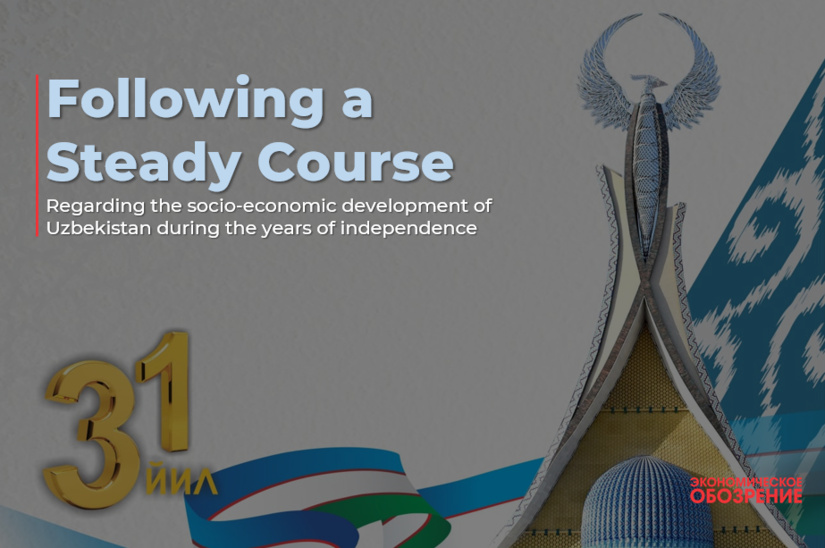
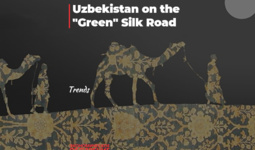
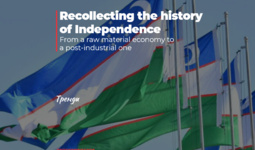
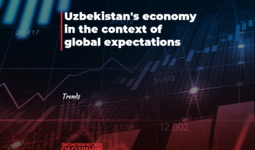
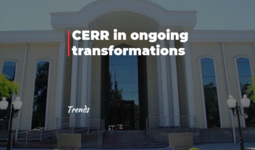
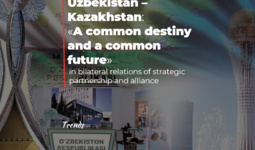
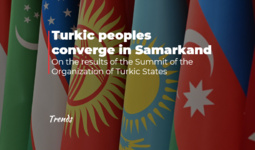













leave a comment